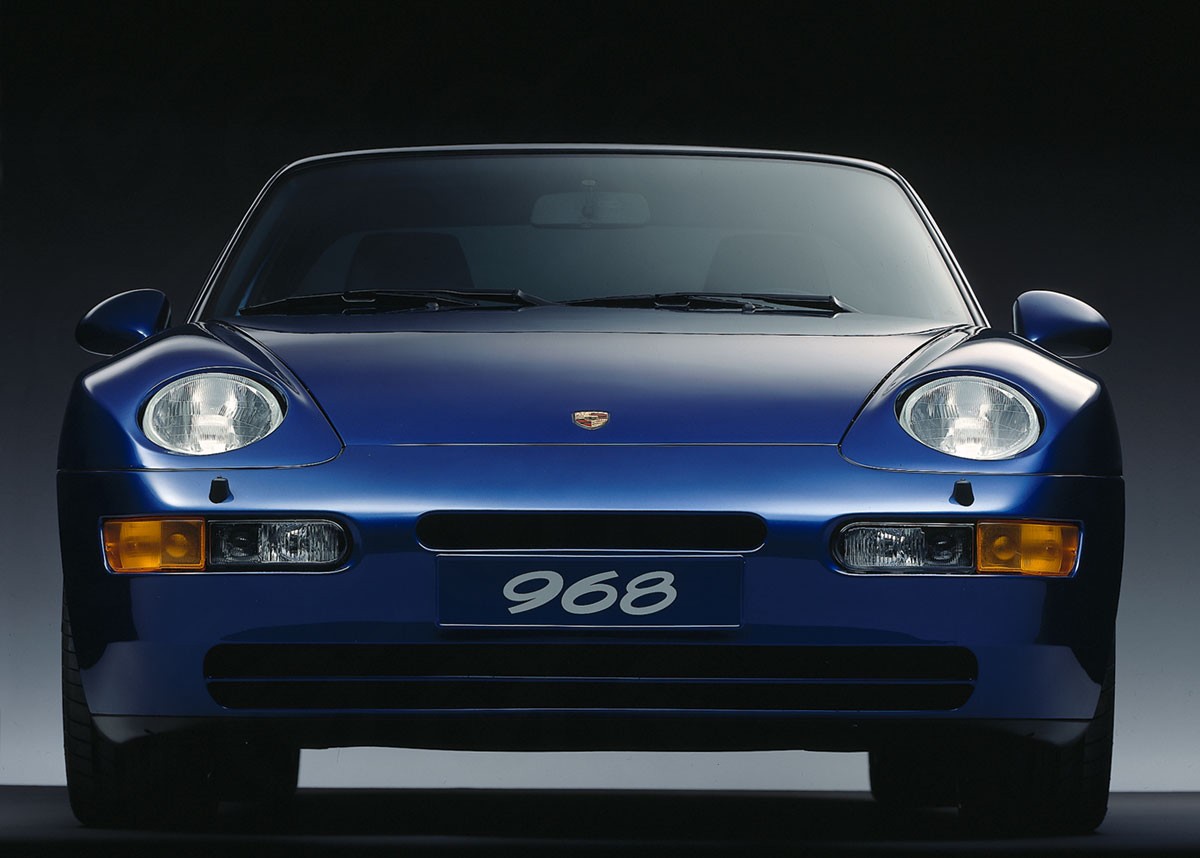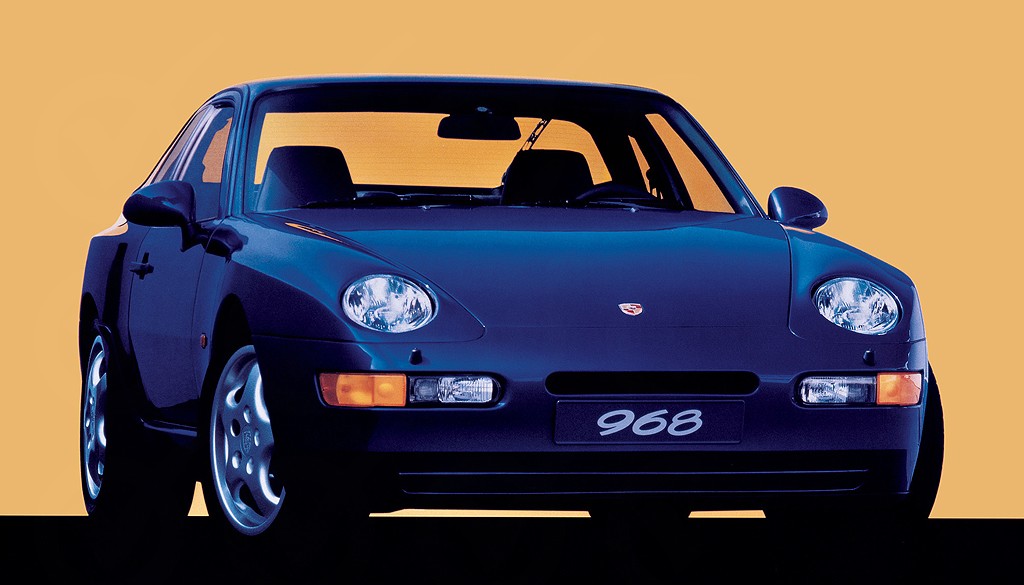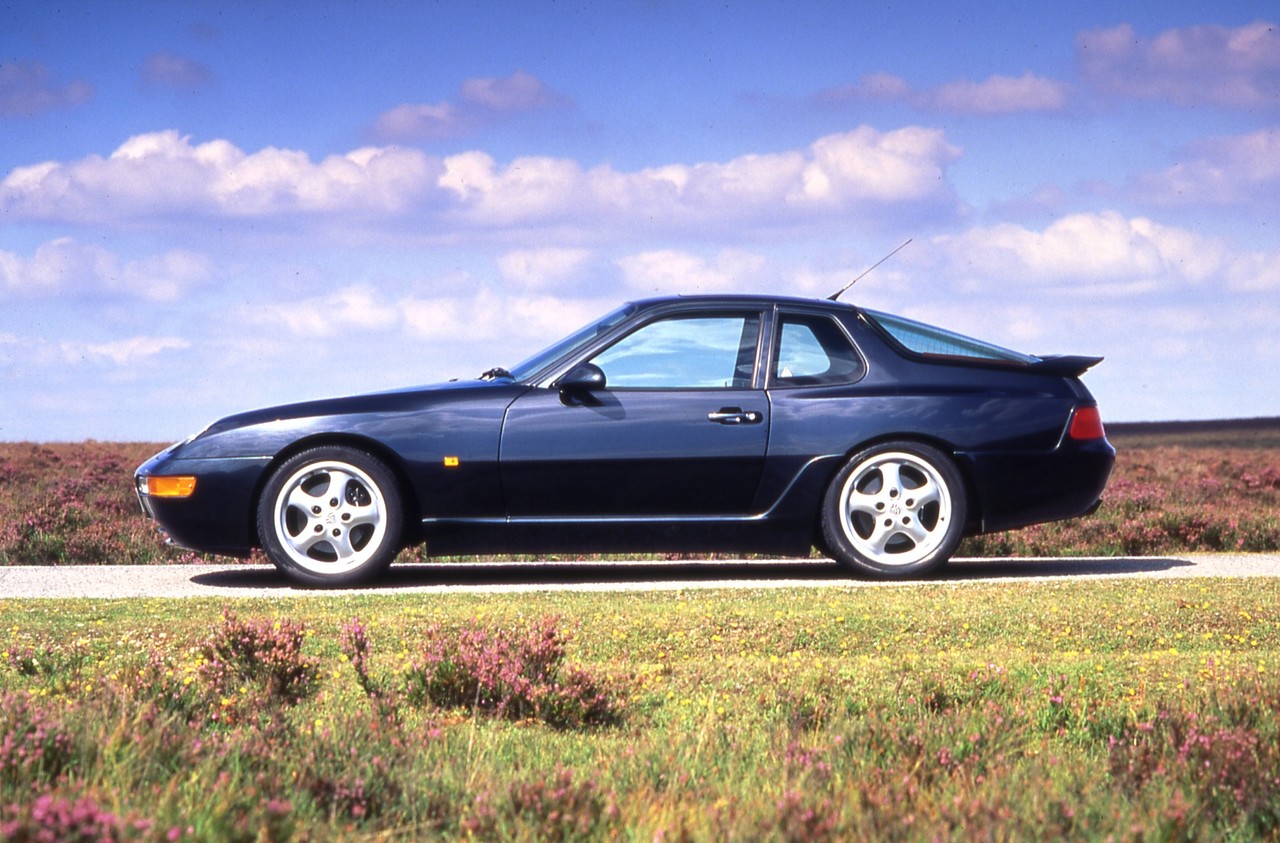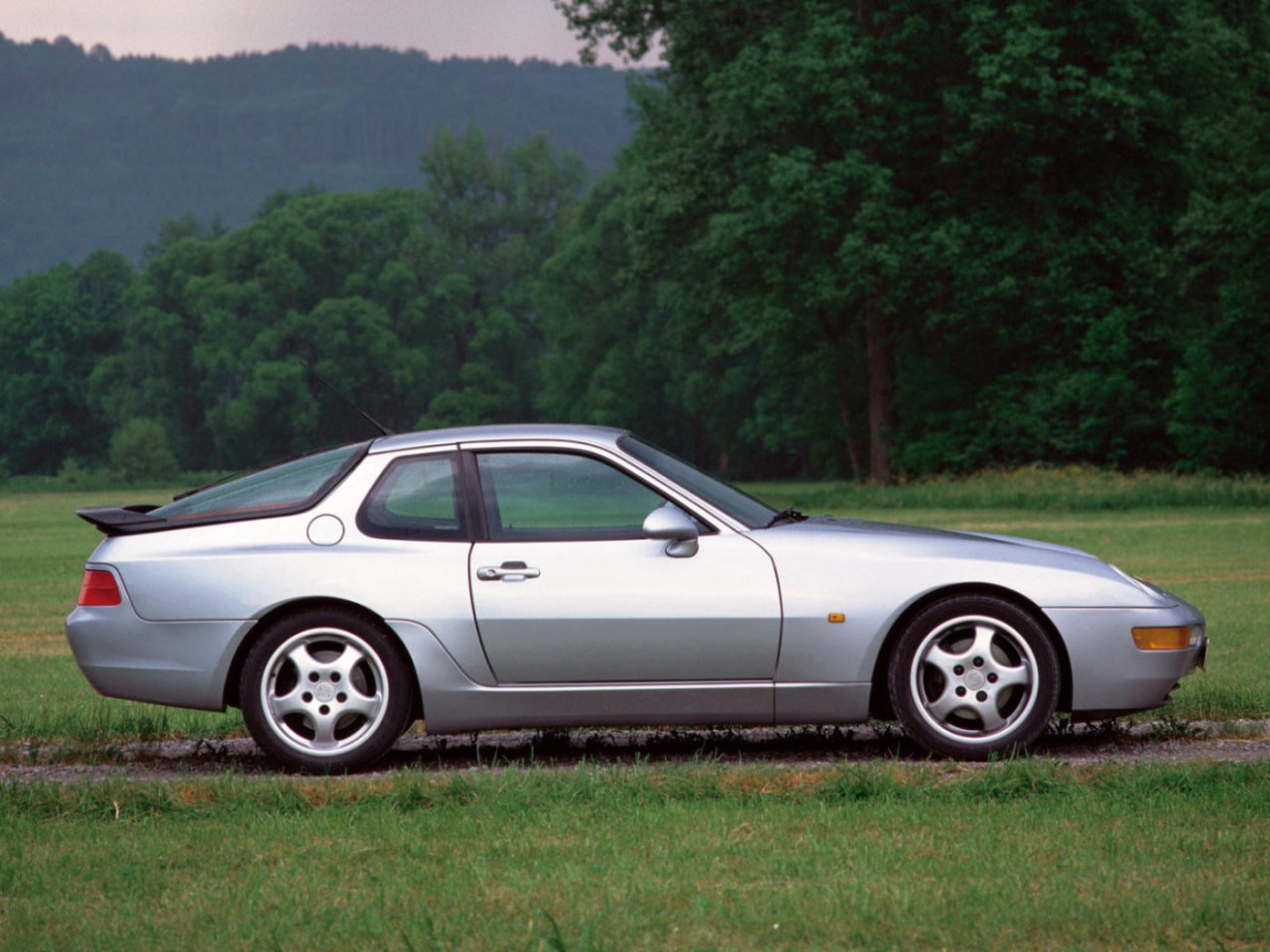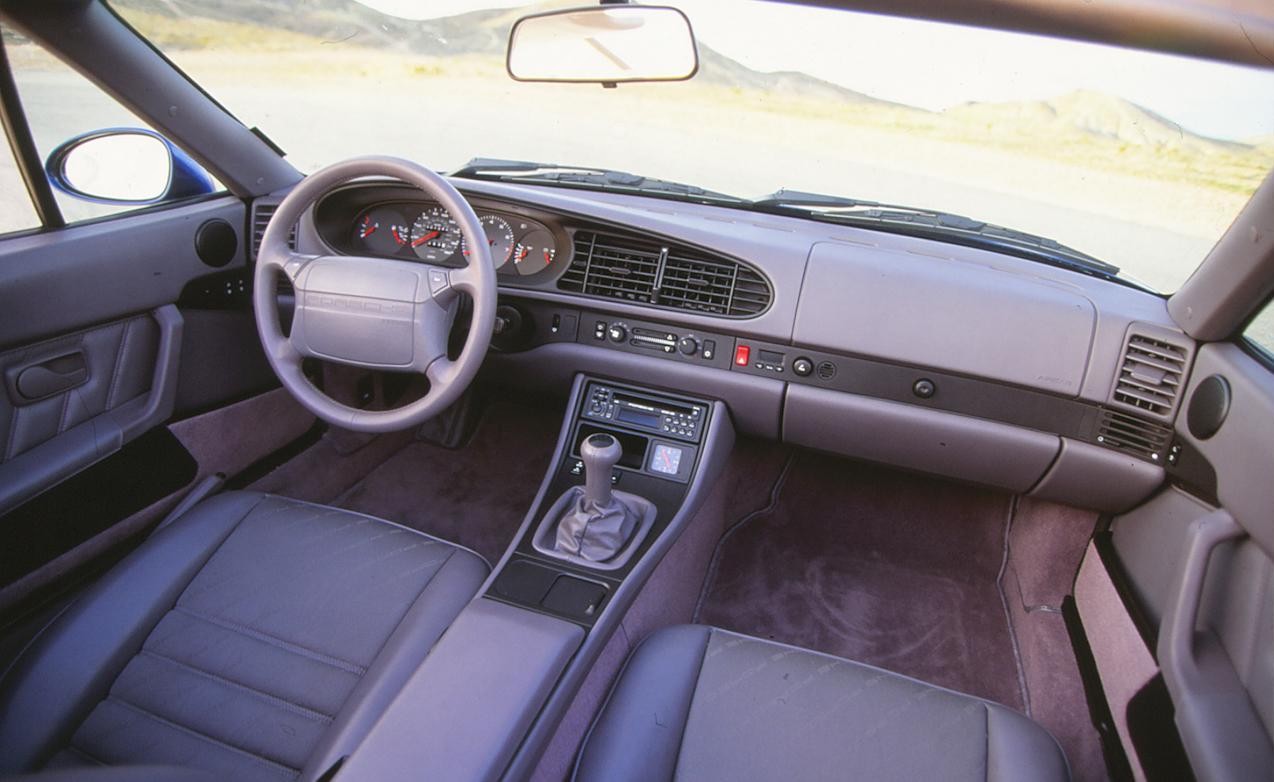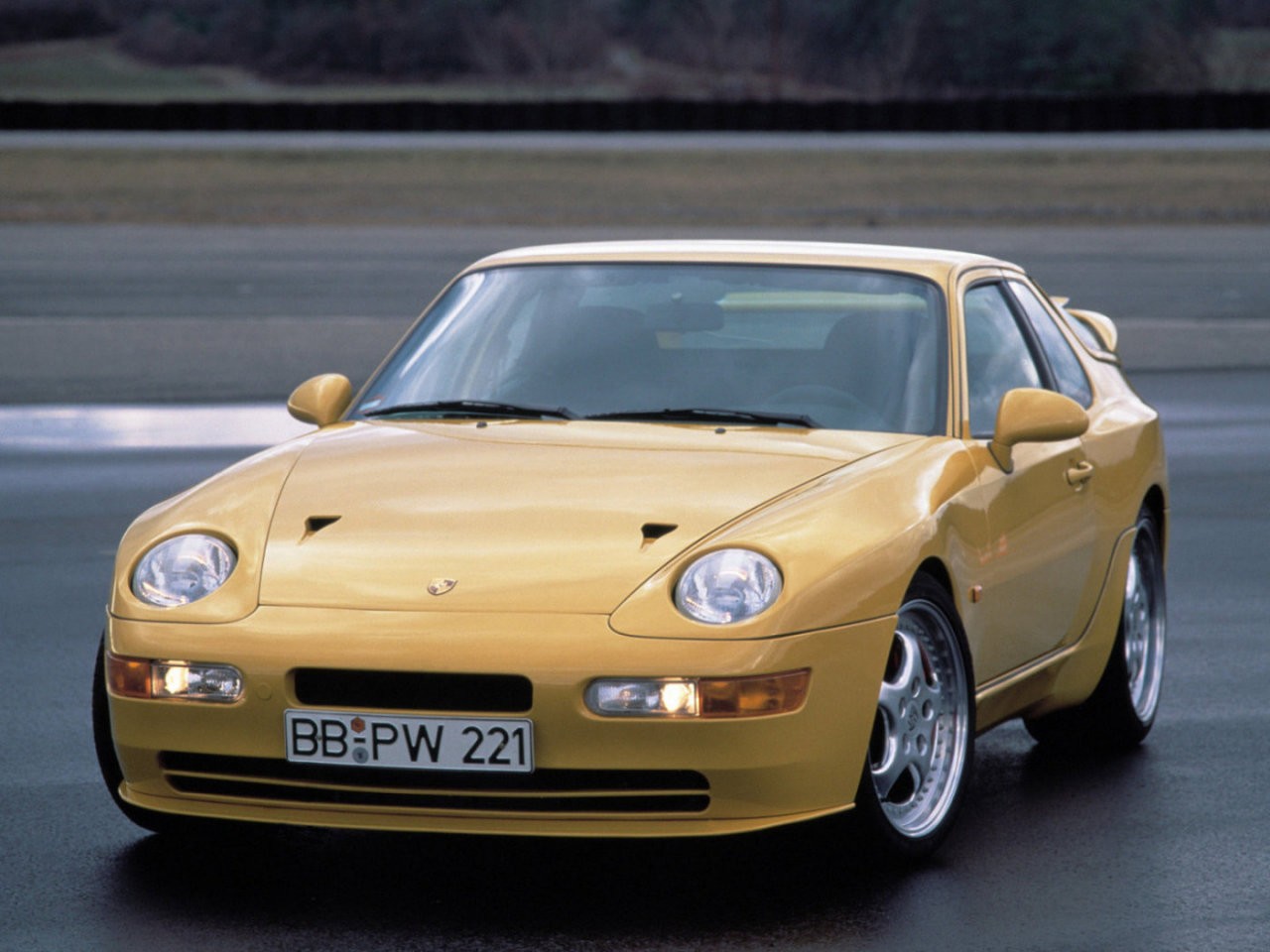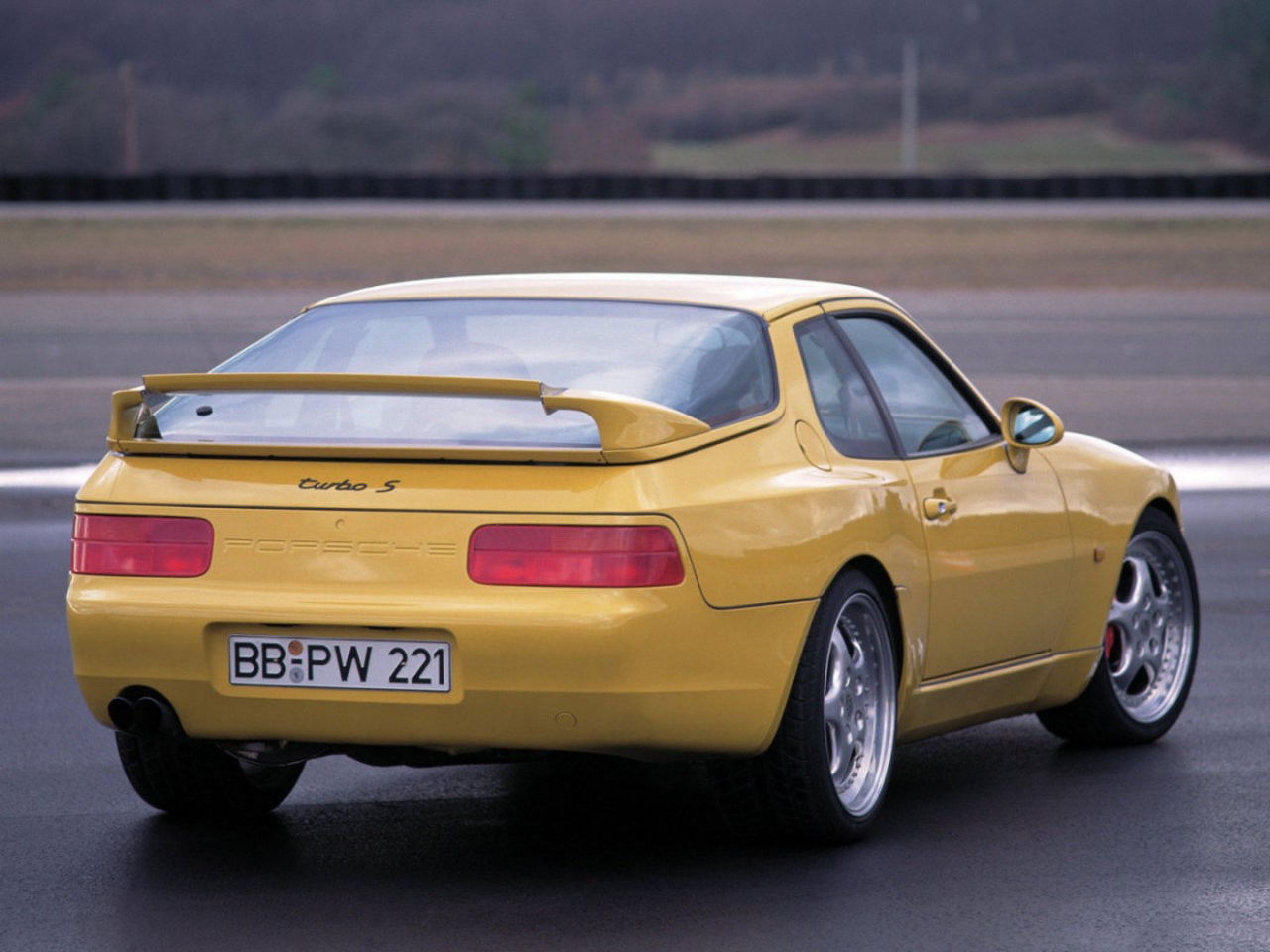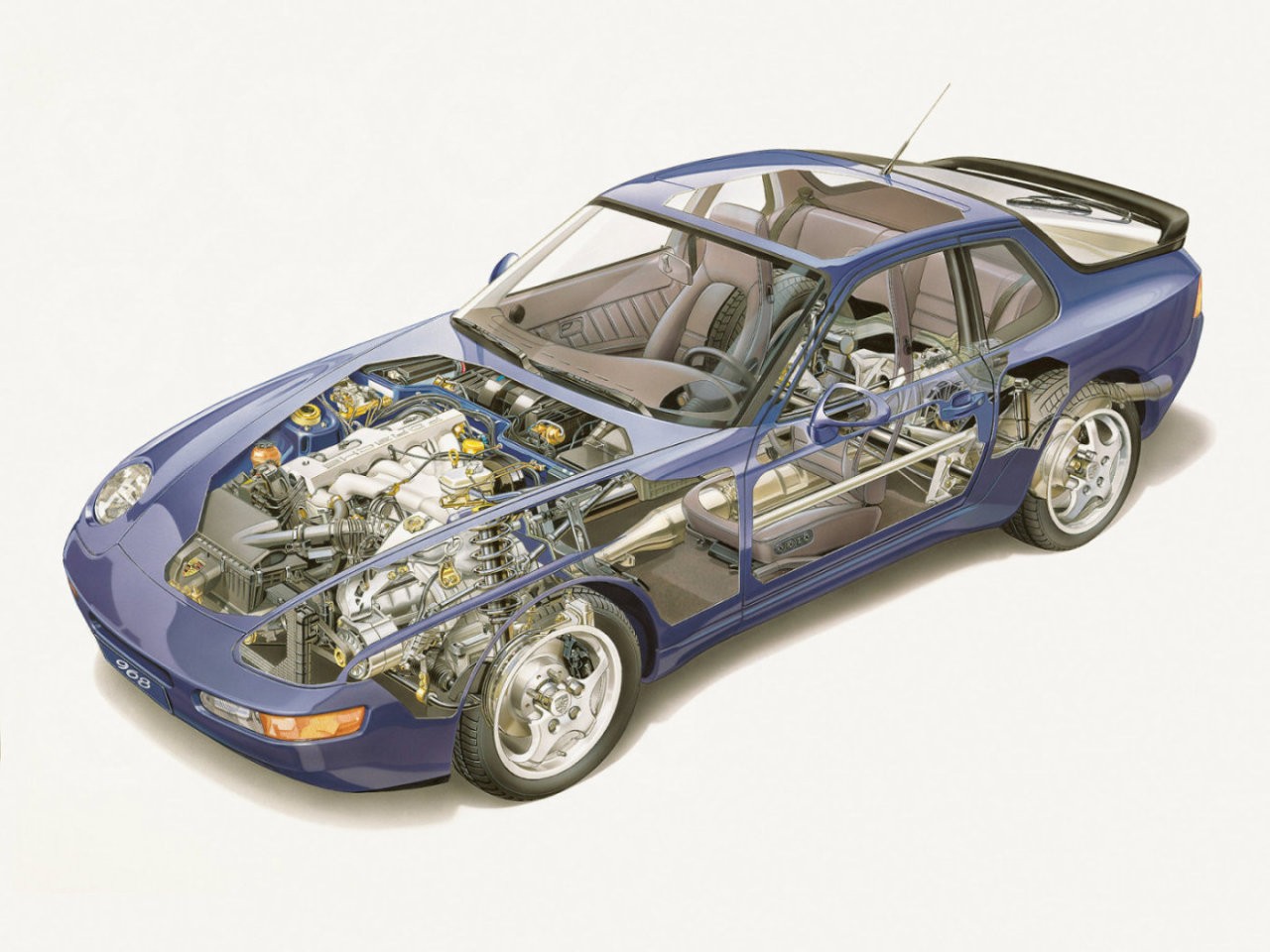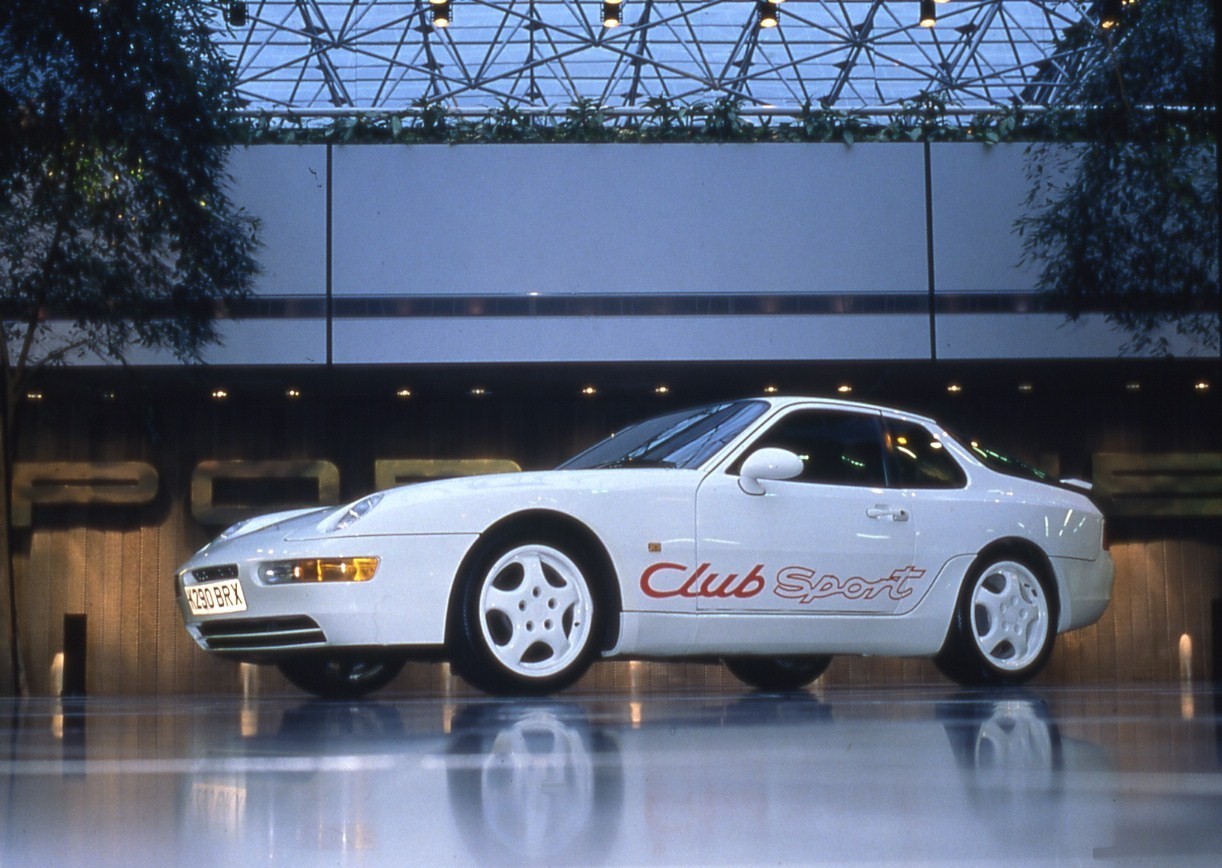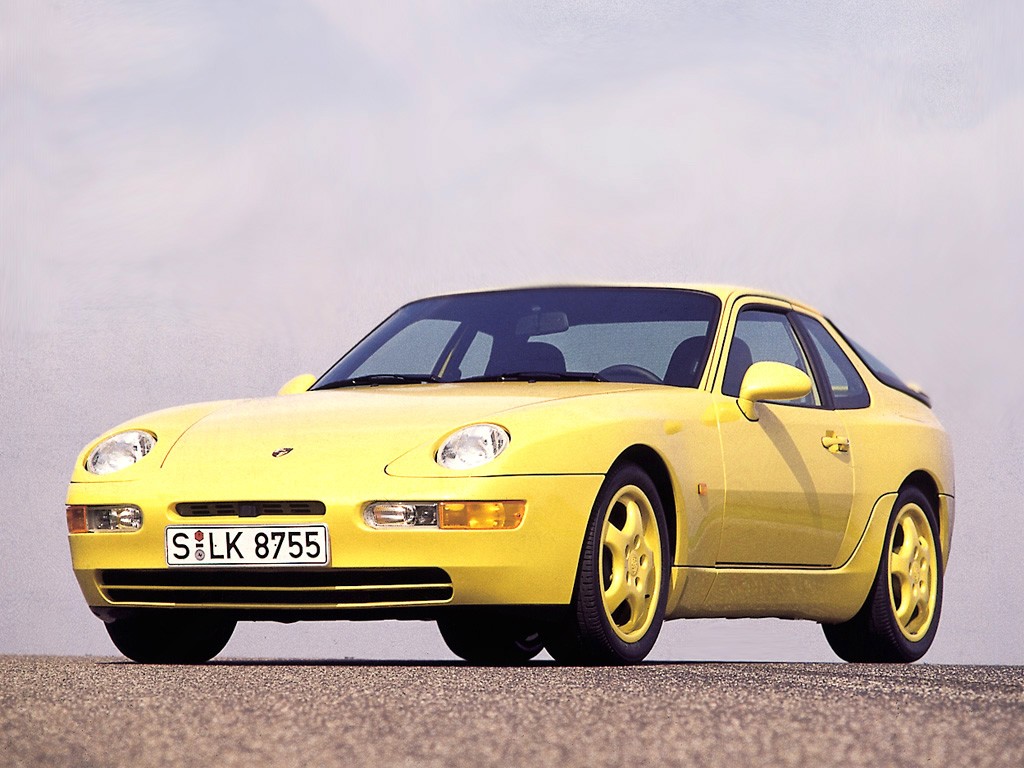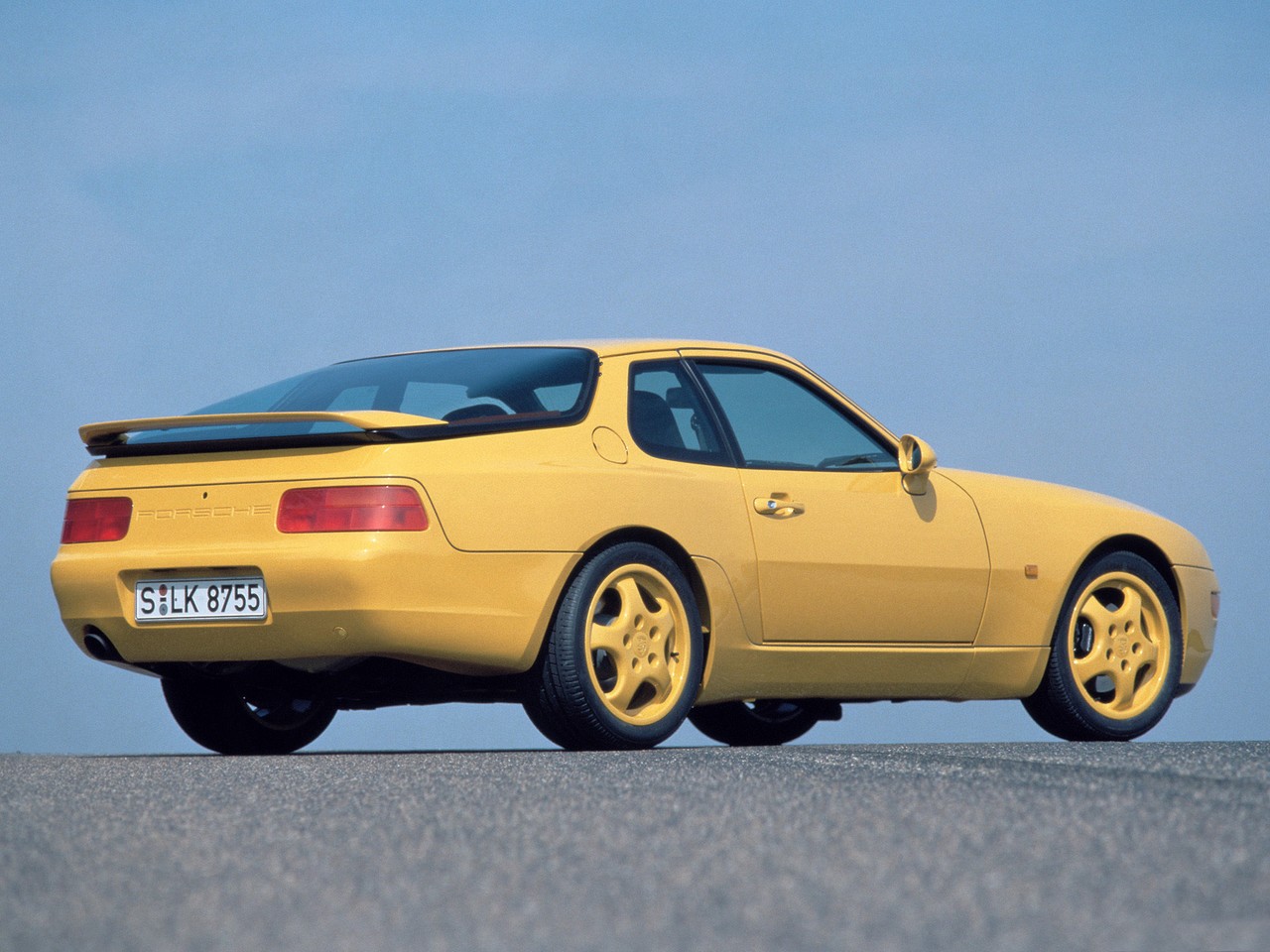
- VarioCam makes for flexible performance from 3.0-litre I4 engine
- Refined six-speed manual transmission
- Balanced chassis
- Excellent dynamics
- Basic interior
- Four-speed automatic transmission blunts performance
- High maintenance and repair costs
Review: Porsche 968 (1992-95)
Overview
Released in February 1992, the Porsche 968 was a three-door liftback with ‘two plus two’ seating (the 968 Cabriolet has been reviewed separately). Manufactured in Stuttgart, Germany, the rear-wheel drive 968 was powered by a 3.0-litre inline four-cylinder petrol engine that was mated to either a six-speed manual or four-speed automatic transmission with sequential shift function (Porsche’s ‘Tiptronic’). For a 50:50 weight distribution, the transmission was fitted ahead of the rear axle (i.e. transaxle configuration). In March 1993, the 968 range was expanded with the introduction of the light-weight 968 CS was released.
Development of the 968 commenced shortly after the release of the 944 S2 in 1989. Since around 80 per cent of the 944’s mechanical components were either significantly modified or replaced, Porsche decided to introduce the ‘968’ name for the vehicle.
Engine
The 3.0-litre four-cylinder engine had an aluminium alloy block and cylinder heads, double overhead cams, four valves per cylinder, variable intake valve timing (Porsche’s ‘VarioCam’) and a compression ratio of 11.0:1. With VarioCam,
- Below 1500 rpm, intake camshaft timing was advanced for lower emissions;
- Beyond 1500 rpm, however, camshaft timing was retarded for greater torque which peaked at 4100 rpm; and,
- Above 5500 rpm, timing was advanced again for greater efficiency.
Upon its release, Porsche claimed that the engine was the first naturally aspirated engine to produce 75 lb-ft of torque (101.7 Nm) per litre. Fitted with the manual transmission, the 968 could accelerate from rest to 60 mph in 6.3 seconds.
Dimensions and styling
Styled by Harm Lagaay, the 968 was 4320 mm long, 1735 mm wide, 1275 mm tall and had a 2400 mm long wheelbase; the drag coefficient was 0.34 Cd.
Compared to the 944, the 968 could be identified by its pop-up headlights (providing a familial link to the 928 ), 16-inch five-spoke ‘Cup’ style alloy wheels, rounded single-lens tail light, updated ‘B’ pillar and rear quarter window.
Suspension
The 968 had MacPherson strut front suspension with aluminium alloy lower control arms and independent rear suspension with semi-trailing arms and transverse torsion bars.
| Years | Engine | Trans. | Peak power | Peak torque | |
|---|---|---|---|---|---|
| 968 | 1992-94 | 3.0-litre petrol I4 | 6sp man., 4sp auto |
176 kW at 6200 rpm | 304 Nm at 4100 rpm |
| 968 CS | 1993-94 | 3.0-litre petrol I4 | 6sp man. | 176 kW at 6200 rpm | 304 Nm at 4100 rpm |
Safety equipment
Standard safety equipment for the Porsche 968 initially consisted of ABS, with a driver’s airbag fitted from 1993.
Brakes
The 968 had 298 mm by 28 mm front and 299 mm by 24 mm rear internally vented brake discs with four-piston Brembo calipers front and rear.
Features
Standard feature for the Porsche 968 included 16-inch ‘Cup’ style alloy wheels with 205/55 ZR 7J x 16 front and 225/50 ZR 8J x 16 rear tyres, a six speaker sound system with a radio and cassette player, climate control air conditioning, power adjustable front seats, leather seats, integrated front fog lights, a leather-wrapped steering wheel, central locking, power windows, power mirrors and an alarm.
Extra-cost options included cruise control, a power sunroof and limited slip differential.
1993 Porsche 968 CS (ClubSport)
Released in March 1993, the 968 CS (short for ‘Club Sport’) was a lighter and more performance-oriented version of the standard 968. By omitting the driver’s airbag, air conditioning, power windows, power mirrors, central locking, the rear bench seat and having less sound deadening material, kerb weight was reduced by approximately 100 kg to 1320 kg.
The 968 CS was fitted with 17-inch alloy wheels with 225/45 ZR 7.5J x 17 front and 255/40 ZR 9J x 17 rear tyres, 20 mm lower and firmer suspension, ventilated and cross-drilled disc brakes, and a limited slip rear differential. Inside, there was a three-spoke steering wheel and Recaro racing seats.
Related links
